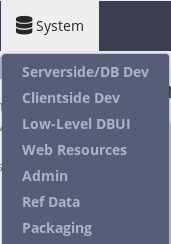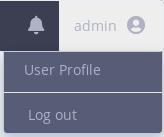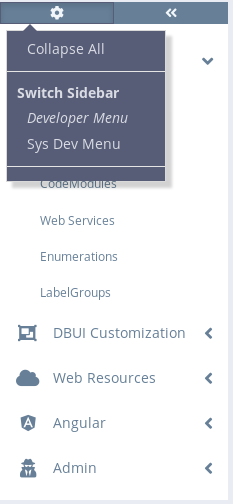A Tour of the DBUI¶
Noonian’s graphical user interface is referred to as DBUI: an initialism for “DataBase User Interface”.
The DBUI is what you see when you log in, and provides all of the screens for viewing and editing Business Objects in the system. It provides a rich interface for managing your data, and is designed to serve as a starting point for your database application.
This section will provide a brief introduction to the overall layout and some basic features built in to the DBUI.
When you first log in to a fresh instance, you are greeted with the default home screen:
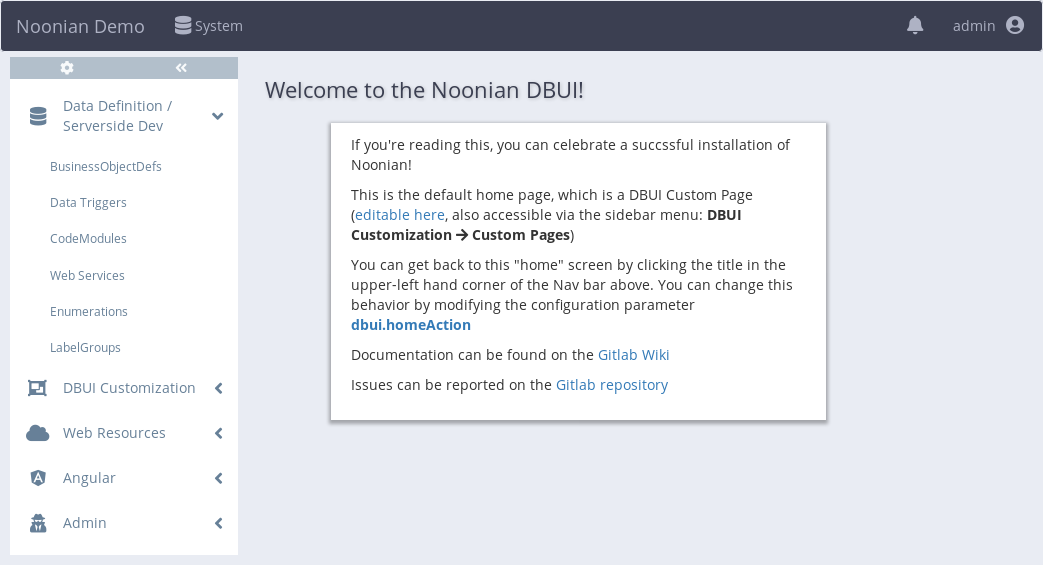
At the top we’ve got the navbar, on the left we’ve got the sidebar, and the majority of the screen is our main content area.
The Sidebar¶

The sidebar is the primary mechanism by which the user navigates a Noonian system. The content of the sidebar is customizable based on user role.
The default sidebar for the system admin role is the Developer Menu, providing access to the components used for developing a Noonian application.
Minimize and Expand¶
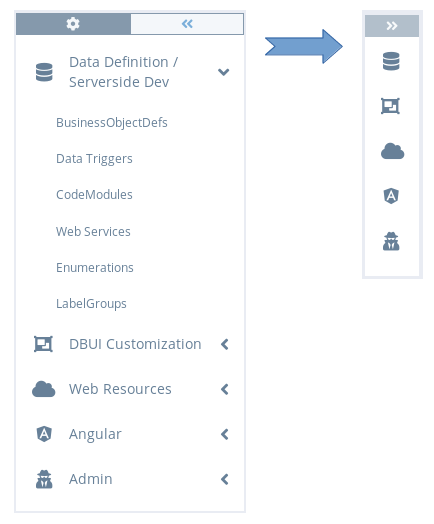
The double chevron icon on the top right of the sidebar provides a way to reduce the size of the sidebar. Clicking it reduces the display to show only icons for each submenu title. In minimized mode, a submenu is exposed when the mouse hovers over its submenu icon.
Home Screen¶
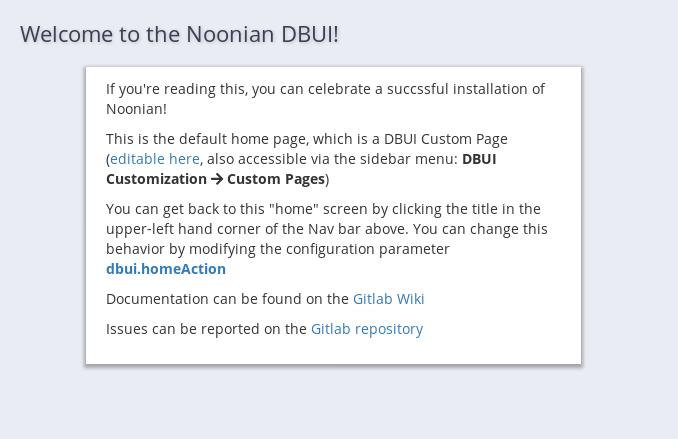
When the user initially logs in, the main content area is populated with a configurable home screen. This is the same screen that is shown when the user clicks the title on top left of the navbar.
The default home screen on a fresh instance provides information on how to customize it.
List, Edit, and View Business Objects¶
The core functionality of the Noonan DBUI is in editing, viewing and querying Business Objects in the database. There are 3 primary screens for doing so: list, edit, and view.
List¶
The list screen displays a list of Business Objects in the system. It includes search and query tools and configurable action buttons.
It happens that all of the links on the Developer Menu actually link to a list screen. As an example, let’s take a look at the configuration list, since there are a number of objects to be seen on a fresh instance:
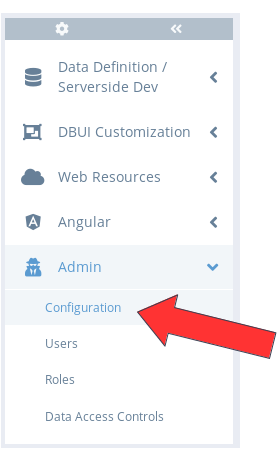
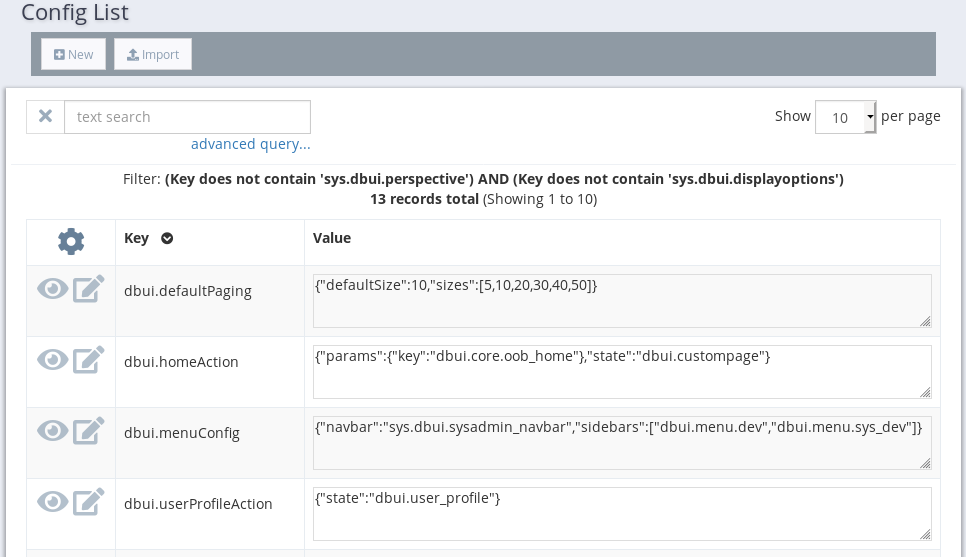
You see a filtered list of Config Business Objects in the system, and several buttons and tools.
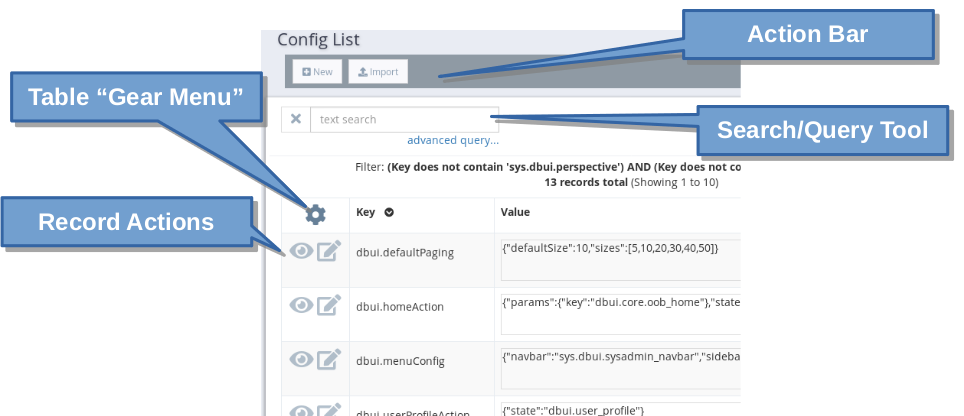
- Action Bar
Shows buttons for configured actions for the current perspective.
- Search/Query Tool
Allows for a quick text search, or opening the Query Builder to perform more sophisticated query on the data.
- Gear Menu
Shows a dropdown to perform table-related actions, such as editing the displayed columns, or refreshing or exporting the data.
- Record Actions
Shows record-specific actions that can be invoked for a specific row. The View and Edit actions are generally present for the default list perspectives.
Edit¶
The edit screen displays a form for editing a single Business Object. It includes layout editing tools and configurable action buttons.
As an example, let’s take a look at an edit screen for a User Business Object:
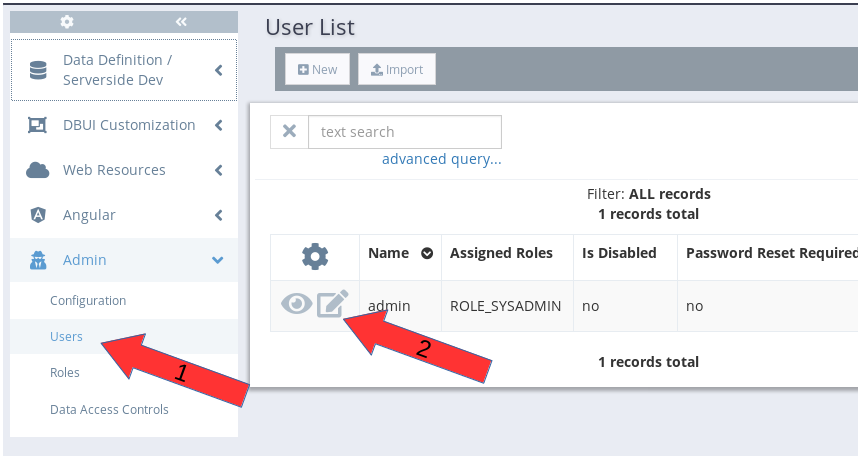
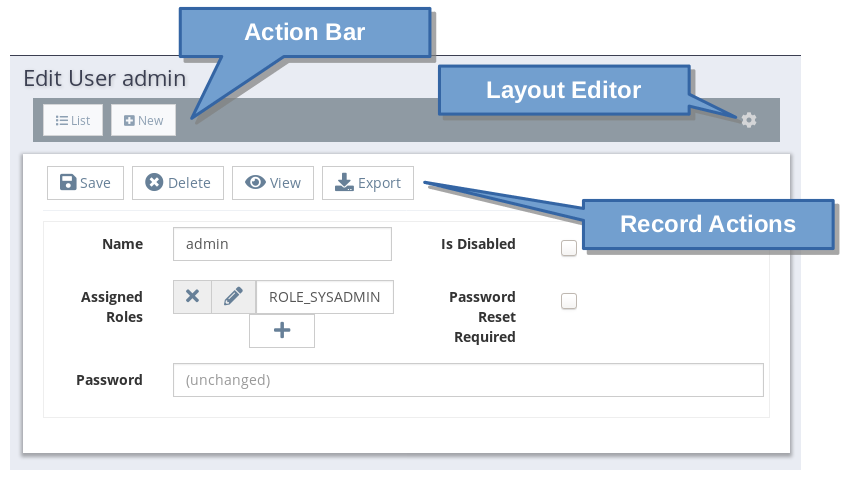
- Action Bar
Shows buttons for configured actions for the current perspective.
- Layout Editor
Shows a dialog that allows the user to change the fields displayed and the layout of the form.
- Record Actions
Shows record-specific actions that can be invoked for the object being edited. The Save, Delete, View, and Export actions are generally present for the default edit perspectives.
View¶
The view screen is very similar to an edit screen, the obvious difference being the editability of the displayed Business Object.
As an example, let’s look at the corresponding view for the User object we examined above. Use the View button from the edit screen:
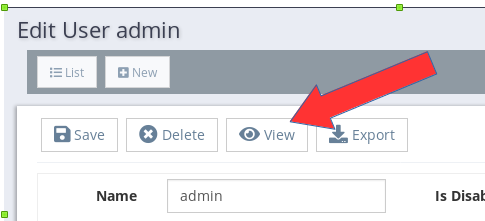
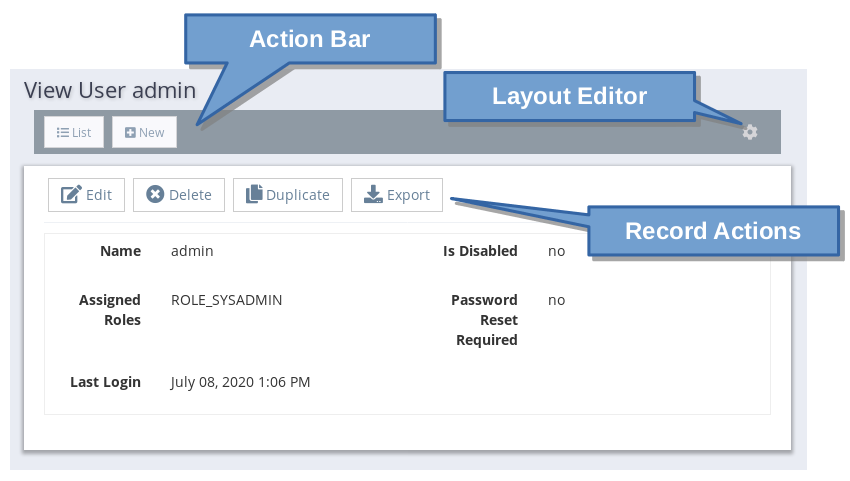
- Action Bar
Shows buttons for configured actions for the current perspective.
- Layout Editor
Shows a dialog that allows the user to change the fields displayed and the layout of the form.
- Record Actions
Shows record-specific actions that can be invoked for the object being edited. The Edit, Delete, Duplicate, and Export actions are generally present for the default view perspectives.

